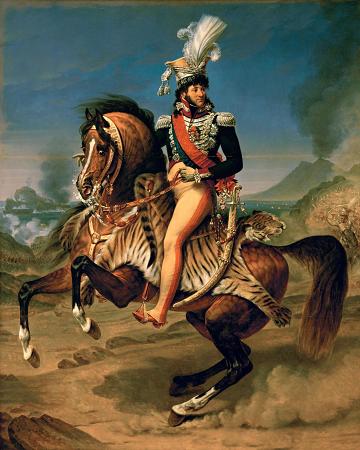Neoclassical Artist. Neoclassicism is the name given to Western movements in the decorative and visual arts, literature, theatre, music, and architecture that draw inspiration from the classical art and culture of classical antiquity. Neoclassicism was born largely thanks to the writings of Johann Joachim Winckelmann, at the time of the rediscovery of Pompeii and Herculaneum, but its popularity spread all over Europe as a generation of European art students finished their Grand Tour and returned from Italy to their home countries with newly rediscovered Greco-Roman ideals. The main Neoclassical movement coincided with the 18th-century Age of Enlightenment, and continued into the early 19th century, laterally competing with Romanticism. In architecture, the style continued throughout the 19th, 20th and up to the 21st century. European Neoclassicism in the visual arts began c. 1760 in opposition to the then-dominant Rococo style. Rococo architecture emphasizes grace, ornamentation and asymmetry; Neoclassical architecture is based on the principles of simplicity and symmetry, which were seen as virtues of the arts of Rome and Ancient Greece, and were more immediately drawn from 16th-century Renaissance Classicism. Each neo-classicism selects some models among the range of possible classics that are available to it, and ignores others. The Neoclassical writers and talkers, patrons and collectors, artists and sculptors of 1765-1830 paid homage to an idea of the generation of Phidias, but the sculpture examples they actually embraced were more likely to be Roman copies of Hellenistic sculptures. They ignored both Archaic Greek art and the works of Late Antiquity. The Rococo art of ancient Palmyra came as a revelation, through engravings in Wood's The Ruins of Palmyra. Even Greece was all-but-unvisited, a rough backwater of the Ottoman Empire, dangerous to explore, so Neoclassicists' appreciation of Greek architecture was mediated through drawings and engravings, which subtly smoothed and regularized, corrected and restored the monuments of Greece, not always consciously. The Empire style, a second phase of Neoclassicism in architecture and the decorative arts, had its cultural centre in Paris in the Napoleonic era. Neoclassicism is a revival of the many styles and spirit of classic antiquity inspired directly from the classical period, which coincided and reflected the developments in philosophy and other areas of the Age of Enlightenment, and was initially a reaction against the excesses of the preceding Rococo style. While the movement is often described as the opposed counterpart of Romanticism, this is a great over-simplification that tends not to be sustainable when specific artists or works are considered. The case of the supposed main champion of late Neoclassicism, Ingres, demonstrates this especially well. The revival can be traced to the establishment of formal archaeology. The writings of Johann Joachim Winckelmann were important in shaping this movement in both architecture and the visual arts. His books Thoughts on the Imitation of Greek Works in Painting and Sculpture and Geschichte der Kunst des Alterthums were the first to distinguish sharply between Ancient Greek and Roman art, and define periods within Greek art, tracing a trajectory from growth to maturity and then imitation or decadence that continues to have influence to the present day. Winckelmann believed that art should aim at noble simplicity and calm grandeur, and praised the idealism of Greek art, in which he said we find not only nature at its most beautiful but also something beyond nature, namely certain ideal forms of its beauty, which, as an ancient interpreter of Plato teaches us, come from images created by the mind alone. The theory was very far from new in Western art, but his emphasis on close copying of Greek models was: The only way for us to become great or if this be possible, inimitable, is to imitate the ancients. With the advent of the Grand Tour, a fad of collecting antiquities began that laid the foundations of many great collections spreading a Neoclassical revival throughout Europe. Neoclassicism in each art implies a particular canon of a classical model. In English, the term Neoclassicism is used primarily of the visual arts; the similar movement in English literature, which began considerably earlier, is called Augustan literature. This, which had been dominant for several decades, was beginning to decline by the time Neoclassicism in the visual arts became fashionable. Though terms differ, the situation in French literature was similar. In music, the period saw the rise of classical music, and Neoclassicism is used of 20th-century developments.
more...














